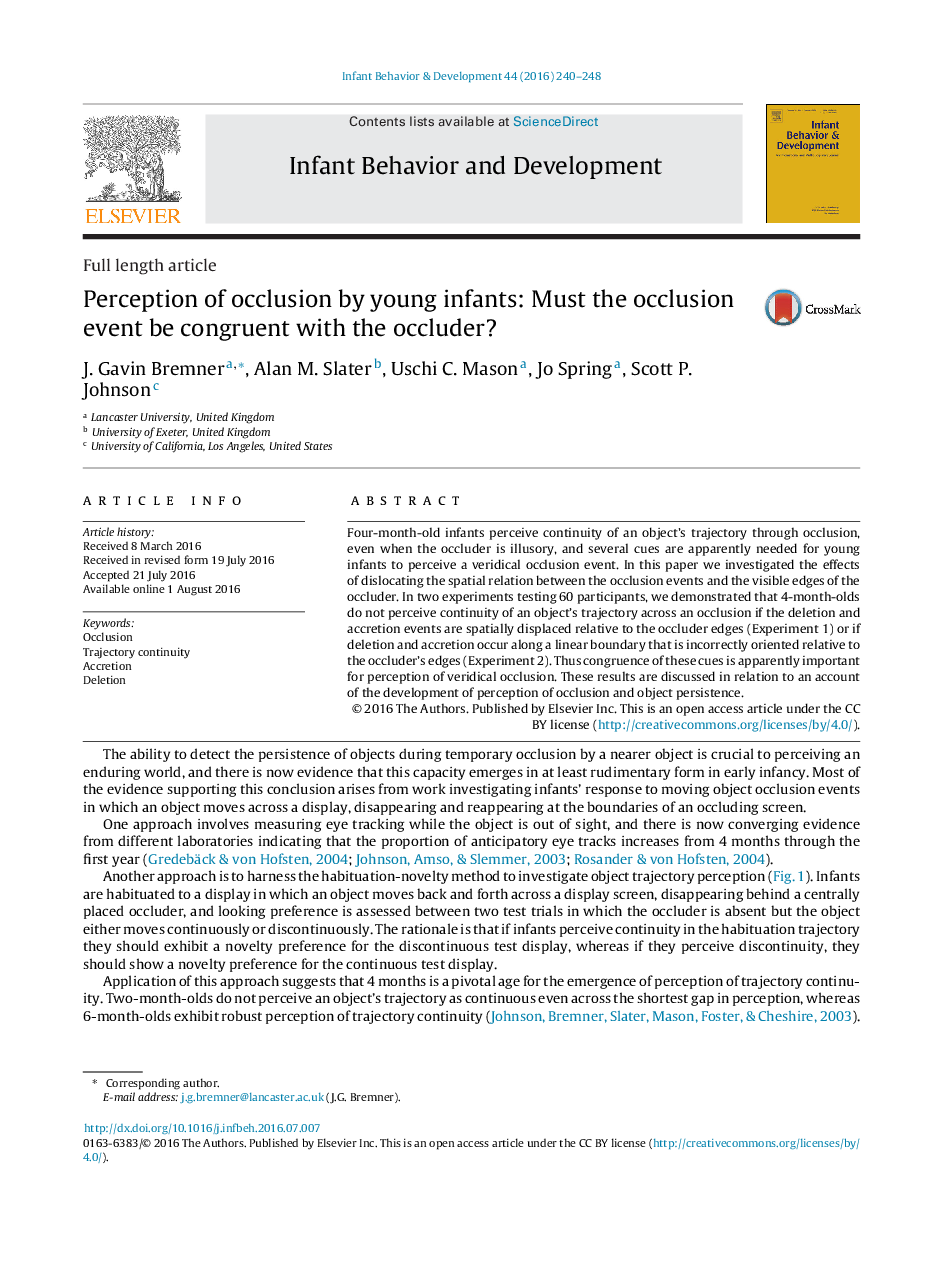| Article ID | Journal | Published Year | Pages | File Type |
|---|---|---|---|---|
| 7273252 | Infant Behavior and Development | 2016 | 9 Pages |
Abstract
Four-month-old infants perceive continuity of an object's trajectory through occlusion, even when the occluder is illusory, and several cues are apparently needed for young infants to perceive a veridical occlusion event. In this paper we investigated the effects of dislocating the spatial relation between the occlusion events and the visible edges of the occluder. In two experiments testing 60 participants, we demonstrated that 4-month-olds do not perceive continuity of an object's trajectory across an occlusion if the deletion and accretion events are spatially displaced relative to the occluder edges (Experiment 1) or if deletion and accretion occur along a linear boundary that is incorrectly oriented relative to the occluder's edges (Experiment 2). Thus congruence of these cues is apparently important for perception of veridical occlusion. These results are discussed in relation to an account of the development of perception of occlusion and object persistence.
Related Topics
Life Sciences
Neuroscience
Behavioral Neuroscience
Authors
J. Gavin Bremner, Alan M. Slater, Uschi C. Mason, Jo Spring, Scott P. Johnson,
